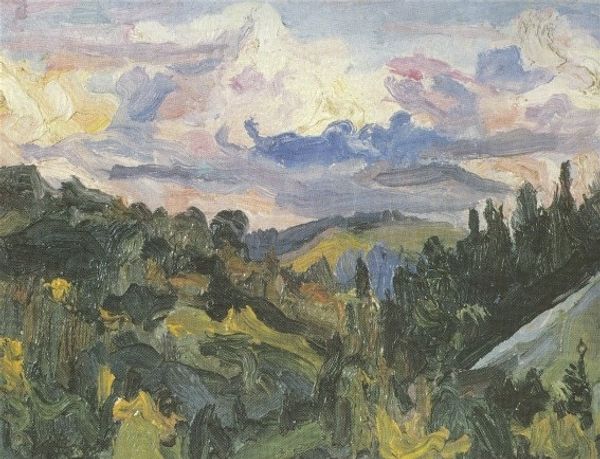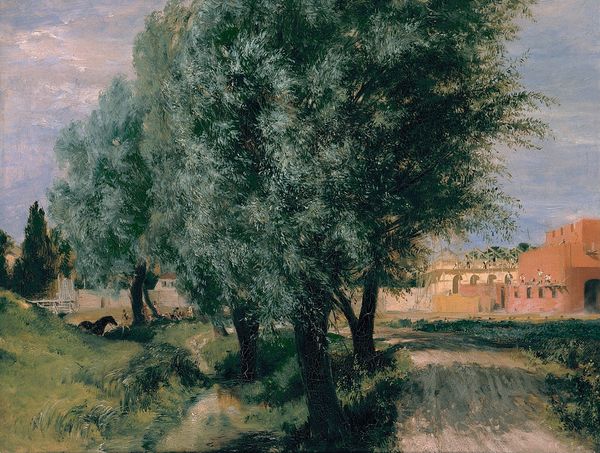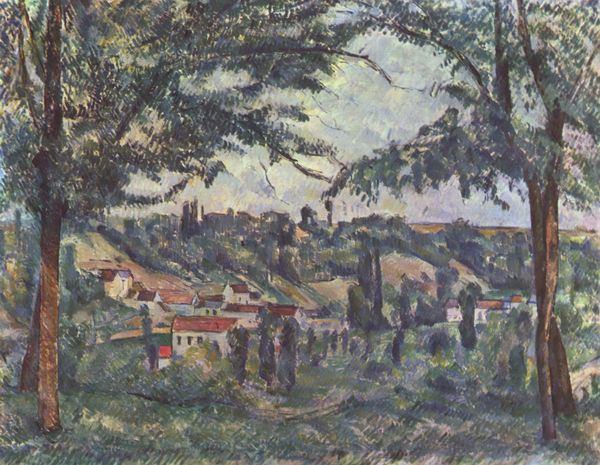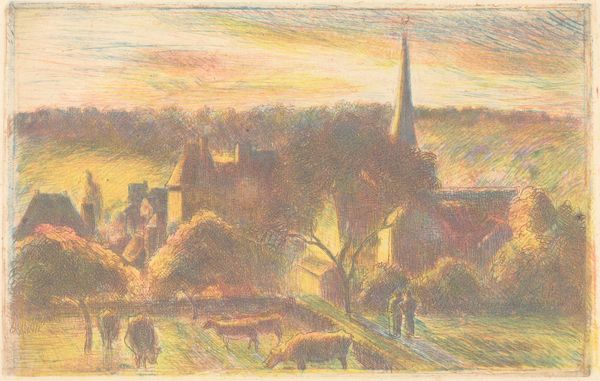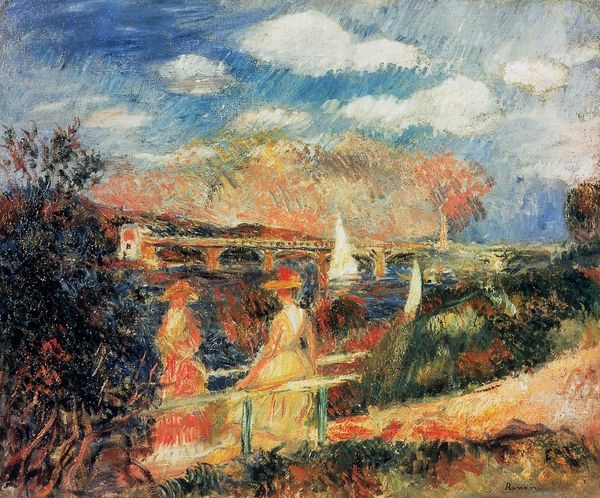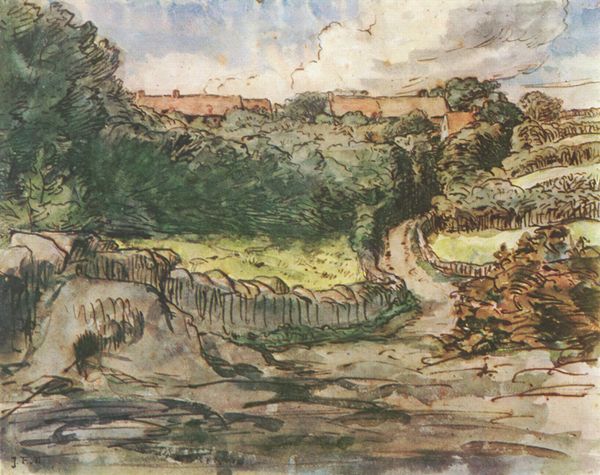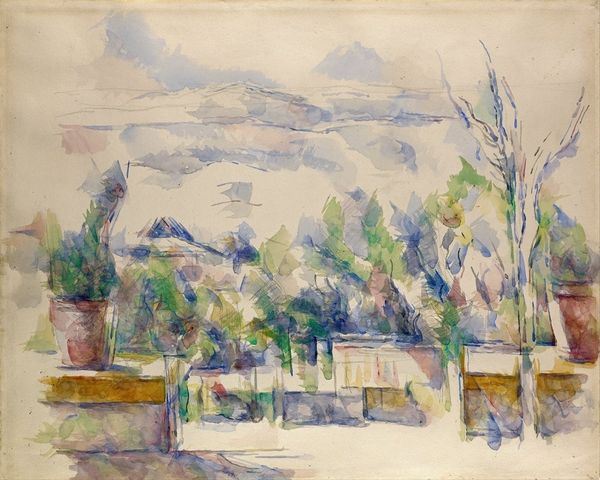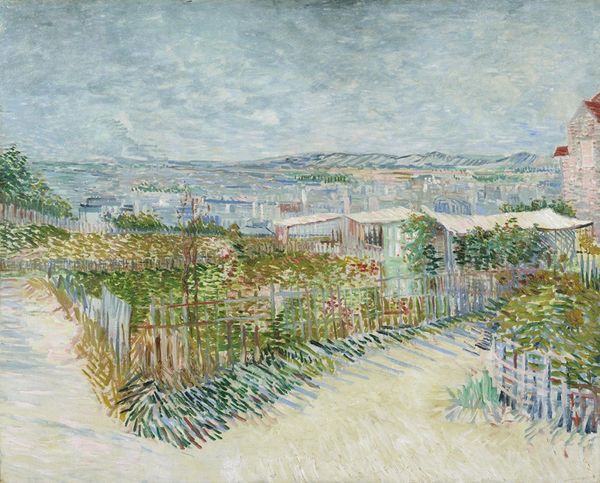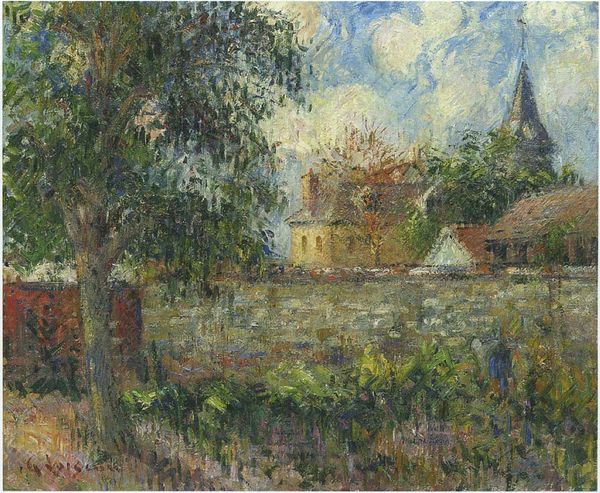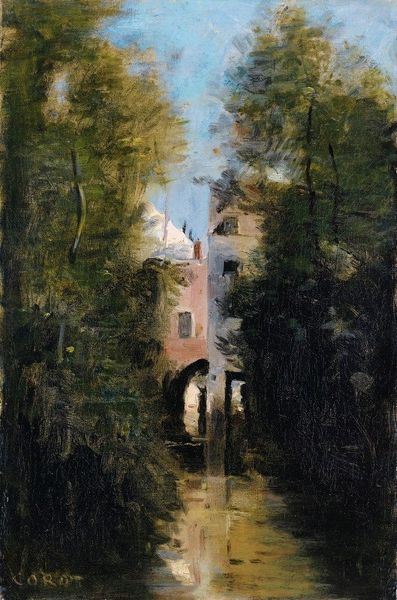
Copyright: Public Domain: Artvee
Editor: So here we have Anton Romako's "Die Weilburg bei Baden," painted in 1885. The brushstrokes are quite visible, almost tactile. What strikes me most is the impasto – you can almost feel the paint. What are your initial thoughts on this work? Curator: Considering Romako's "Weilburg," I see more than just a landscape. I'm immediately drawn to the materiality of the work. Notice the thick application of the paint itself; it's not just representational but fundamentally *present*. It signifies a specific production process, a deliberate layering. How does this emphasis on the medium affect our reading of the landscape itself? Editor: That's interesting. I hadn’t considered the impact of the paint itself so directly. So, you’re saying the way Romako uses the oil paint isn’t just to depict the scene but also makes us think about… work? Curator: Precisely. This visible labor pushes back against a purely romantic or impressionistic reading. What were the social conditions of artistic production at this time? How does Romako’s engagement with materiality fit within or disrupt those structures? Consider, too, who was consuming art like this and how that shapes the artistic choices made. It begs the question, for whom was this scene being produced and consumed? Editor: It's a beautiful painting, but you've made me think about the bigger picture—the who, how, and why of its creation. The actual paint used and the labor are front and center. Curator: Indeed, it encourages us to appreciate the artist’s active manipulation of material in a burgeoning industrial context and understand the values influencing Romako’s intended viewers.
Comments
No comments
Be the first to comment and join the conversation on the ultimate creative platform.
